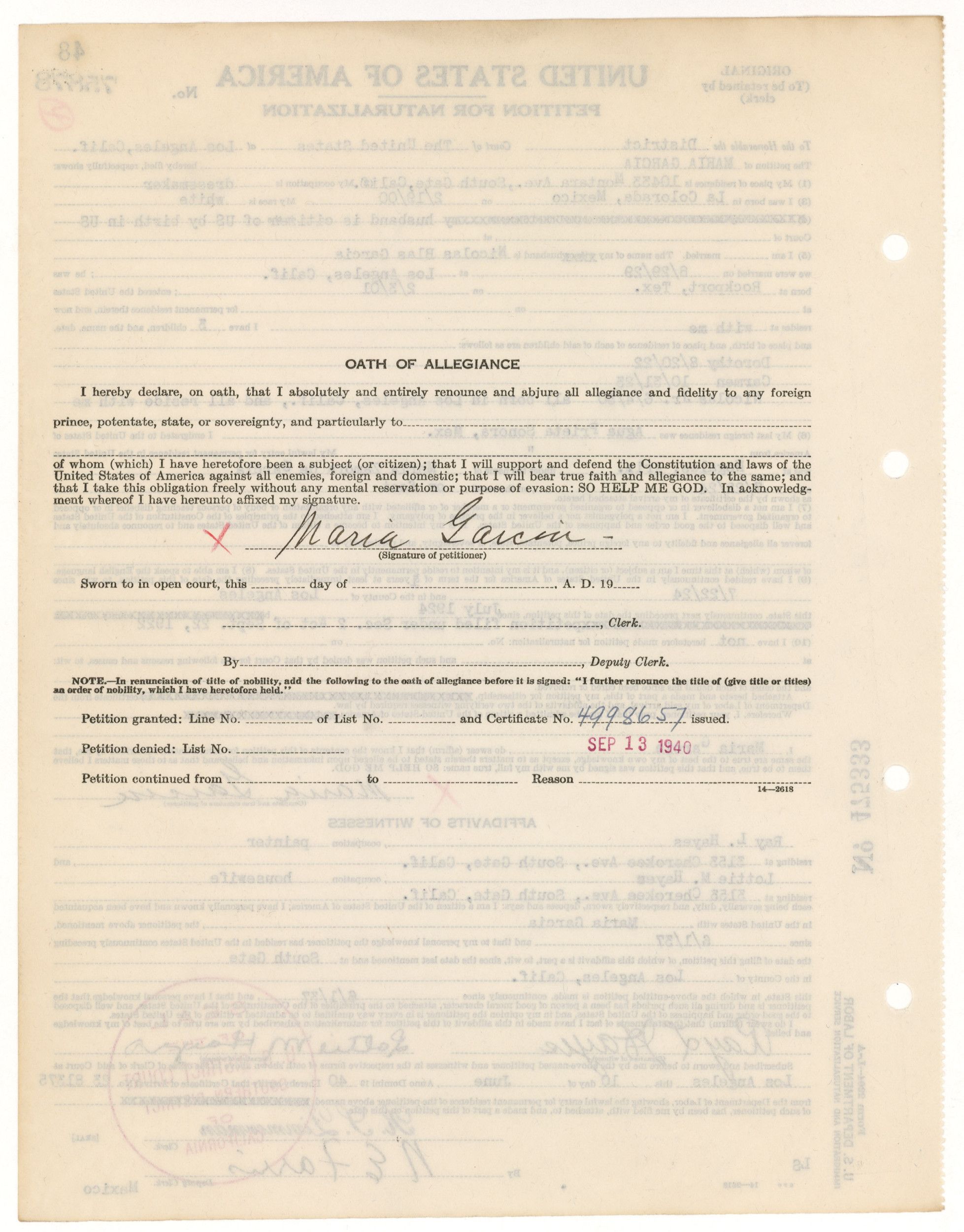Immigration to America: Stories and Travels
Seeing the Big Picture
All documents and text associated with this activity are printed below, followed by a worksheet for student responses.Introduction
Millions of people immigrated to the United States from the 1880s through World War II. Their stories were captured in documents and photographs attached to government forms in immigration case files.Match each document in the grid below to a person based on the reason they were in the United States. Click on the orange "Open in New Window" icons to learn more about that person's story. As you make your matches, note whether each person's reason is a "pull factor" or a "push factor."
After you've finished matching, click "When You're Done" to follow each person on their journey around the world.
Name:
Class:
Class:
Worksheet
Immigration to America: Stories and Travels
Seeing the Big Picture
Examine the documents and text included in this activity. Consider how each document or piece of text relates to each other and create matched pairs. Write the text or document number next to its match below. Write your conclusion response in the space provided.1
2
3
4
5
6
1
Activity Element
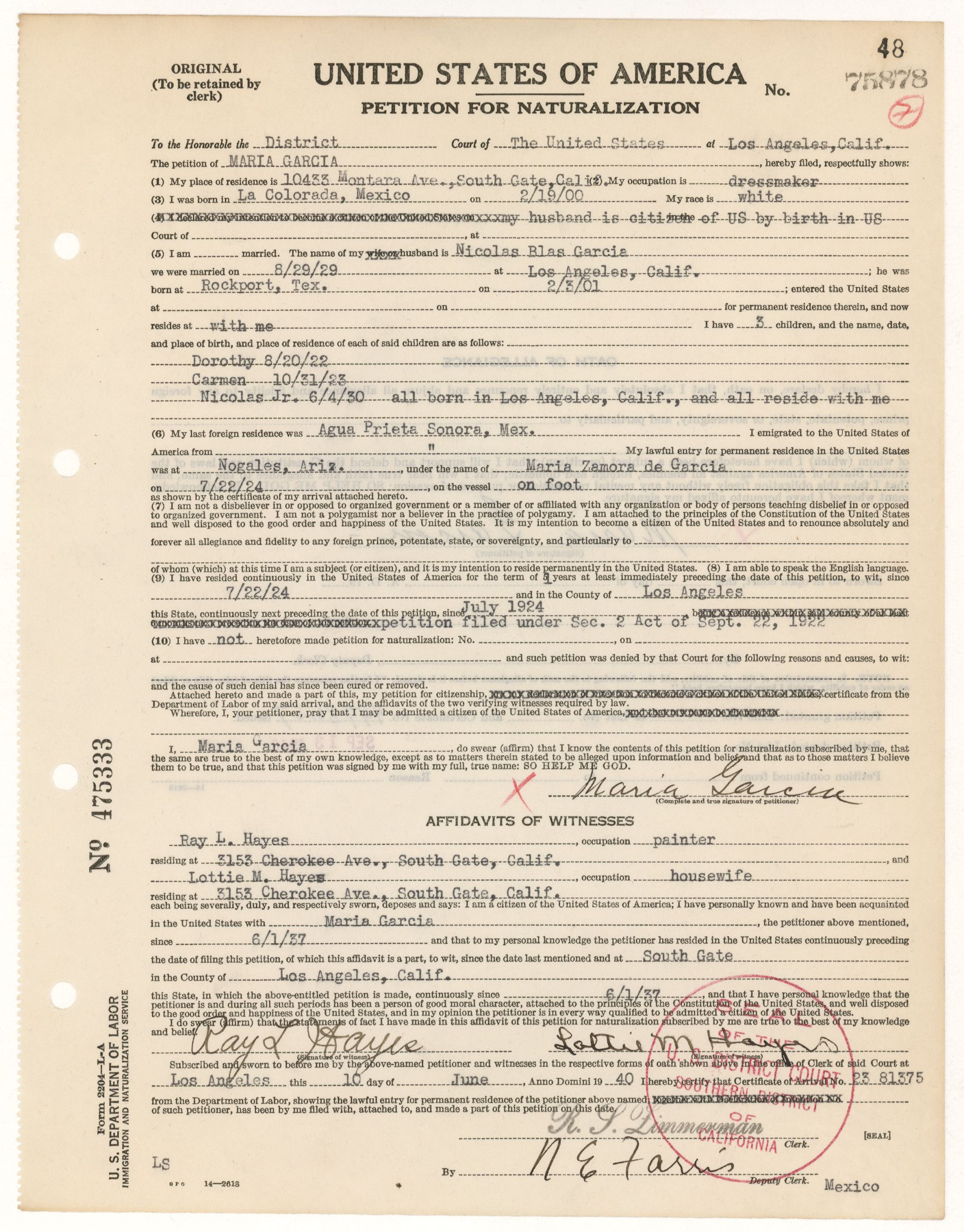
2
Activity Element
Native-born citizen, married to a Chinese merchant
3
Activity Element
Accompanied her husband, a government official of a foreign country.
4
Activity Element
First, marriage to a U.S. serviceman, then to escape following war.
5
Activity Element
Religious persecution and genocide during the Holocaust
6
Activity Element
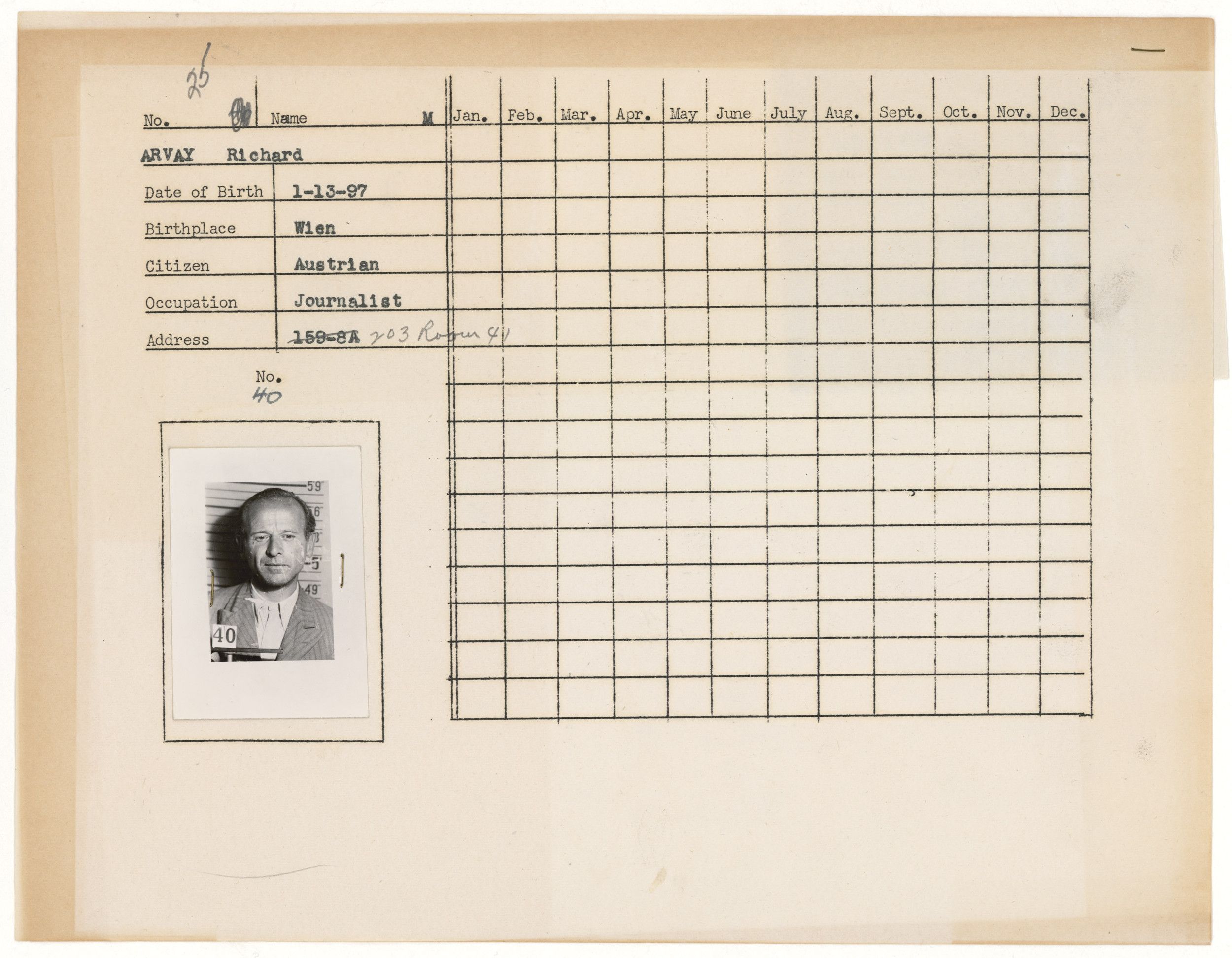
7
Activity Element
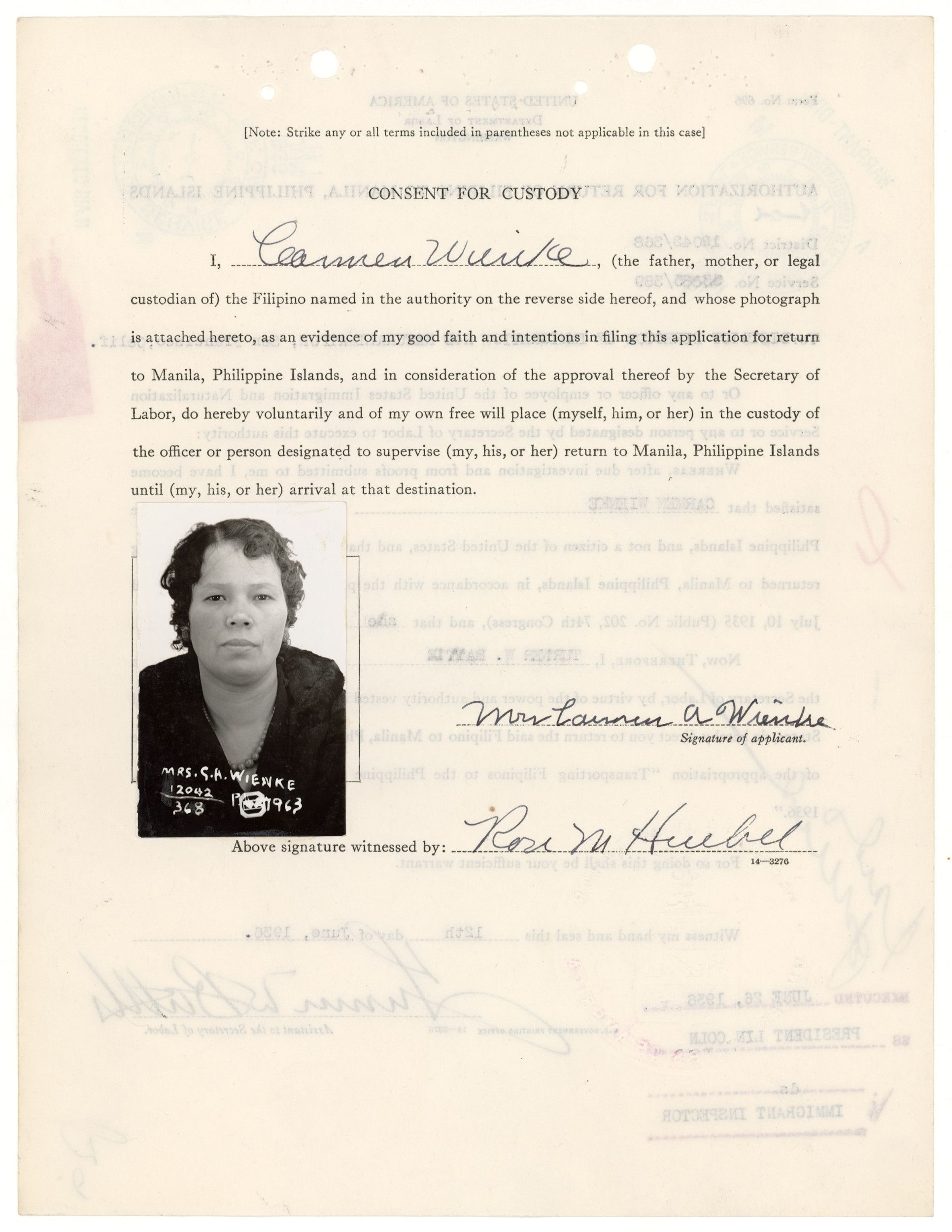
8
Activity Element
Political persecution in Russia
9
Activity Element
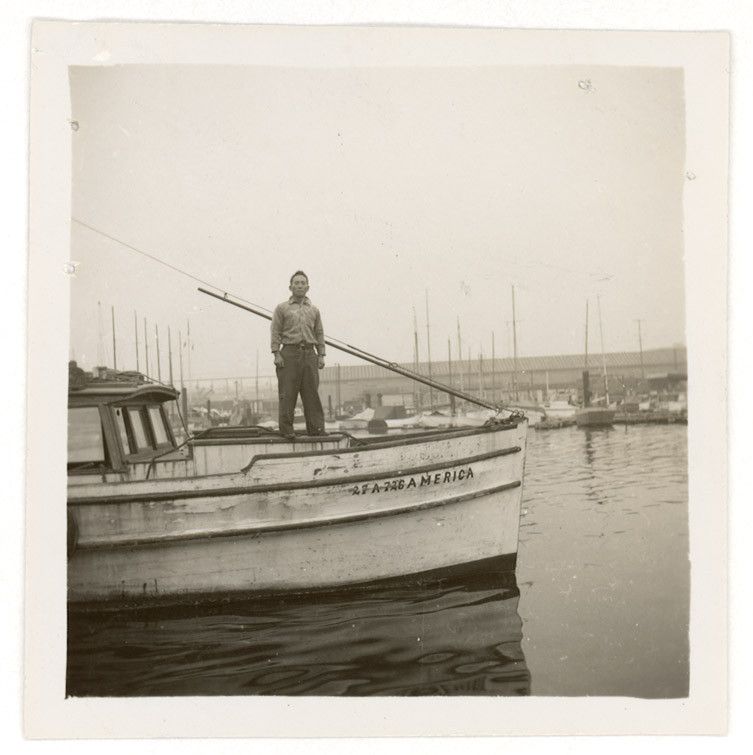
10
Activity Element
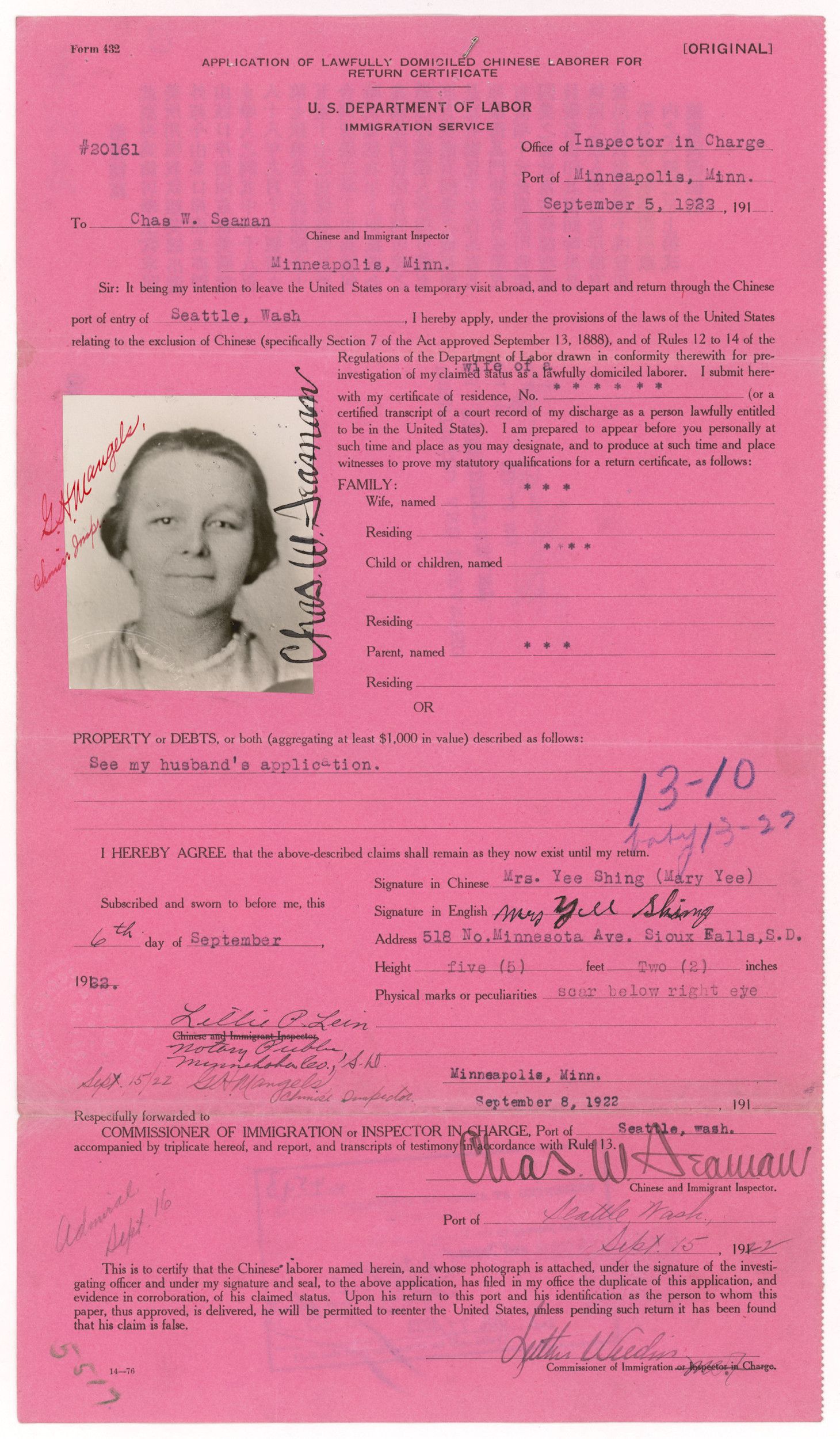
11
Activity Element
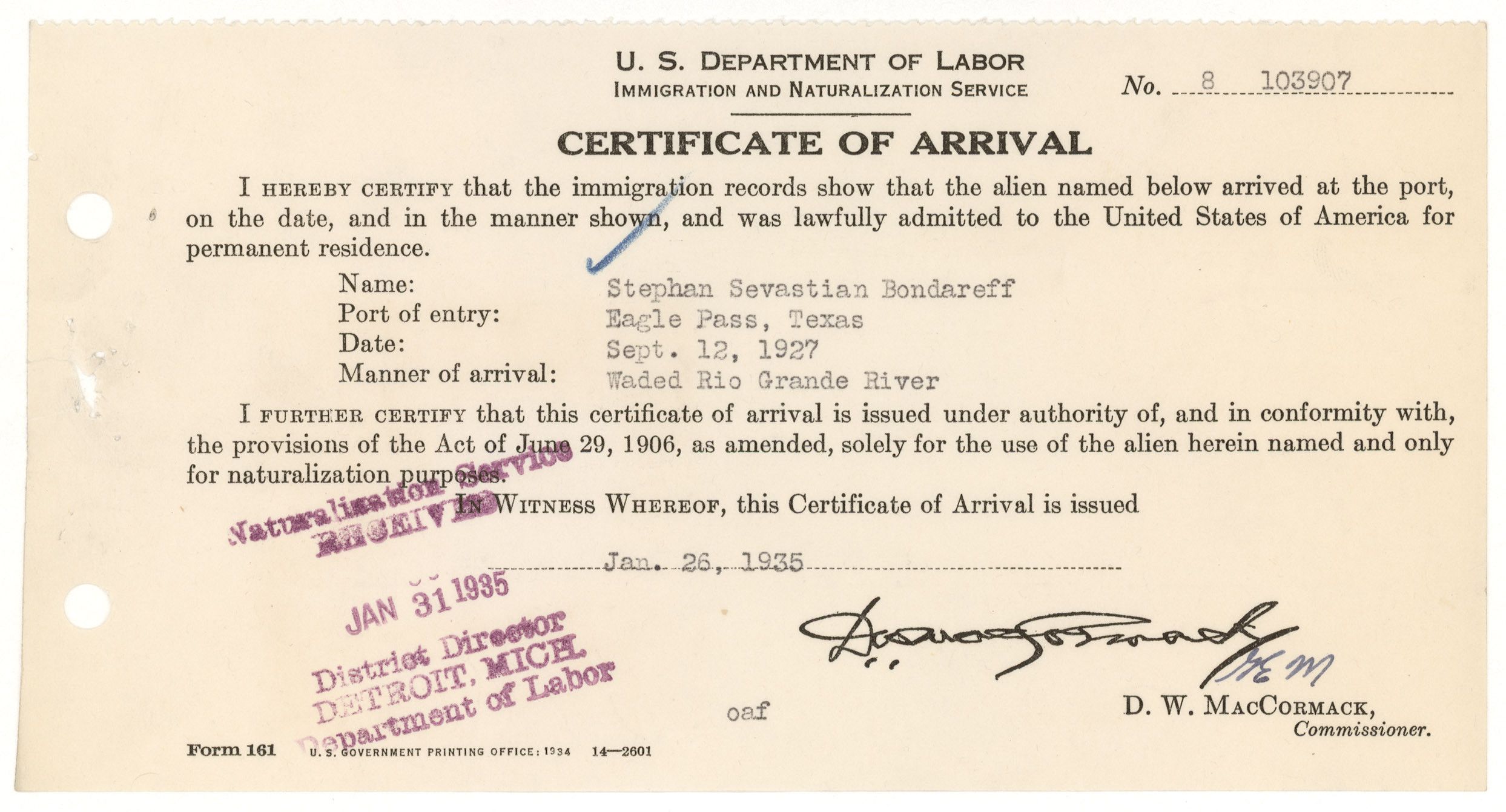
12
Activity Element
Work as a farmer and a fisherman
Culminating Document
Photograph of President Lyndon B. Johnson Signing the Immigration Act
10/3/1965
In this photograph, President Lyndon B. Johnson signs the Immigration and Nationality Act of 1965 at the Statue of Liberty. Vice President Hubert Humphrey, Lady Bird Johnson, Muriel Humphrey, Senator Edward (Ted) Kennedy, Senator Robert F. Kennedy, and others look on.
This law was an important milestone in American immigration history. It ended the "national origins formula" that had been in place since the 1920s. From 1924 until 1965, following passage of the National Origins Act of 1924, a person’s place of birth often determined his or her ability to immigrate legally into the United States. Numerical limits, often called quotas, were assigned to each country.
Immigration laws favored people from northern and western Europe over those from southern and eastern Europe, Asia, and Africa. For example, about 4,000 Italians were allowed to enter the United States annually, while about 66,000 could emigrate from Great Britain. Asian immigrants, who generally entered the United States through Angel Island, were already largely banned from U.S immigration by other laws passed in the late 19th and early 20th centuries.
Potential immigrants needed to apply for spots on the quota in their country of birth, regardless of where they and their family lived. Some quota waiting lists were a dozen years long, while others were not filled.
The Immigration Act of 1965 abolished this quota system and eliminated the formally racial character of immigration to the United States. Rather than discriminating on the basis of ethnicity or race, the law authorized 120,000 immigration visas for people from the western hemisphere and 170,000 visas for people from the eastern hemisphere. It also prioritized keeping families together, and put a preference on skilled workers.
On August 25, the 1965 Immigration and Nationality Act, also known as the Hart-Cellar Act, passed in the U.S. House of Representatives with a vote of 318-95. On September 22, the U.S. Senate passed it with a vote of 76-18. President Johnson signed it into law on October 3, 1965.
The original caption for this photograph reads: Outdoor photograph, sunny day. Wide view of large group of people. Hubert Humphrey and Mrs. Johnson are looking down at President Johnson picking up pen. Ted Kennedy is looking to right of frame, and Robert Kennedy has hand up to chin, smiling. New York City skyline is in background.
This law was an important milestone in American immigration history. It ended the "national origins formula" that had been in place since the 1920s. From 1924 until 1965, following passage of the National Origins Act of 1924, a person’s place of birth often determined his or her ability to immigrate legally into the United States. Numerical limits, often called quotas, were assigned to each country.
Immigration laws favored people from northern and western Europe over those from southern and eastern Europe, Asia, and Africa. For example, about 4,000 Italians were allowed to enter the United States annually, while about 66,000 could emigrate from Great Britain. Asian immigrants, who generally entered the United States through Angel Island, were already largely banned from U.S immigration by other laws passed in the late 19th and early 20th centuries.
Potential immigrants needed to apply for spots on the quota in their country of birth, regardless of where they and their family lived. Some quota waiting lists were a dozen years long, while others were not filled.
The Immigration Act of 1965 abolished this quota system and eliminated the formally racial character of immigration to the United States. Rather than discriminating on the basis of ethnicity or race, the law authorized 120,000 immigration visas for people from the western hemisphere and 170,000 visas for people from the eastern hemisphere. It also prioritized keeping families together, and put a preference on skilled workers.
On August 25, the 1965 Immigration and Nationality Act, also known as the Hart-Cellar Act, passed in the U.S. House of Representatives with a vote of 318-95. On September 22, the U.S. Senate passed it with a vote of 76-18. President Johnson signed it into law on October 3, 1965.
The original caption for this photograph reads: Outdoor photograph, sunny day. Wide view of large group of people. Hubert Humphrey and Mrs. Johnson are looking down at President Johnson picking up pen. Ted Kennedy is looking to right of frame, and Robert Kennedy has hand up to chin, smiling. New York City skyline is in background.
This primary source comes from the Collection LBJ-WHPO: White House Photo Office Collection.
National Archives Identifier: 2803428
Full Citation: Photograph A1421-33A; Photograph of President Lyndon B. Johnson Signing the Immigration Act; 10/3/1965; Johnson White House Photographs, 11/22/1963 - 1/20/1969; Collection LBJ-WHPO: White House Photo Office Collection, ; Lyndon Baines Johnson Library, Austin, TX. [Online Version, https://docsteach.org/documents/document/lbj-immigration-act, April 25, 2024]Photograph of President Lyndon B. Johnson Signing the Immigration Act
Page 1
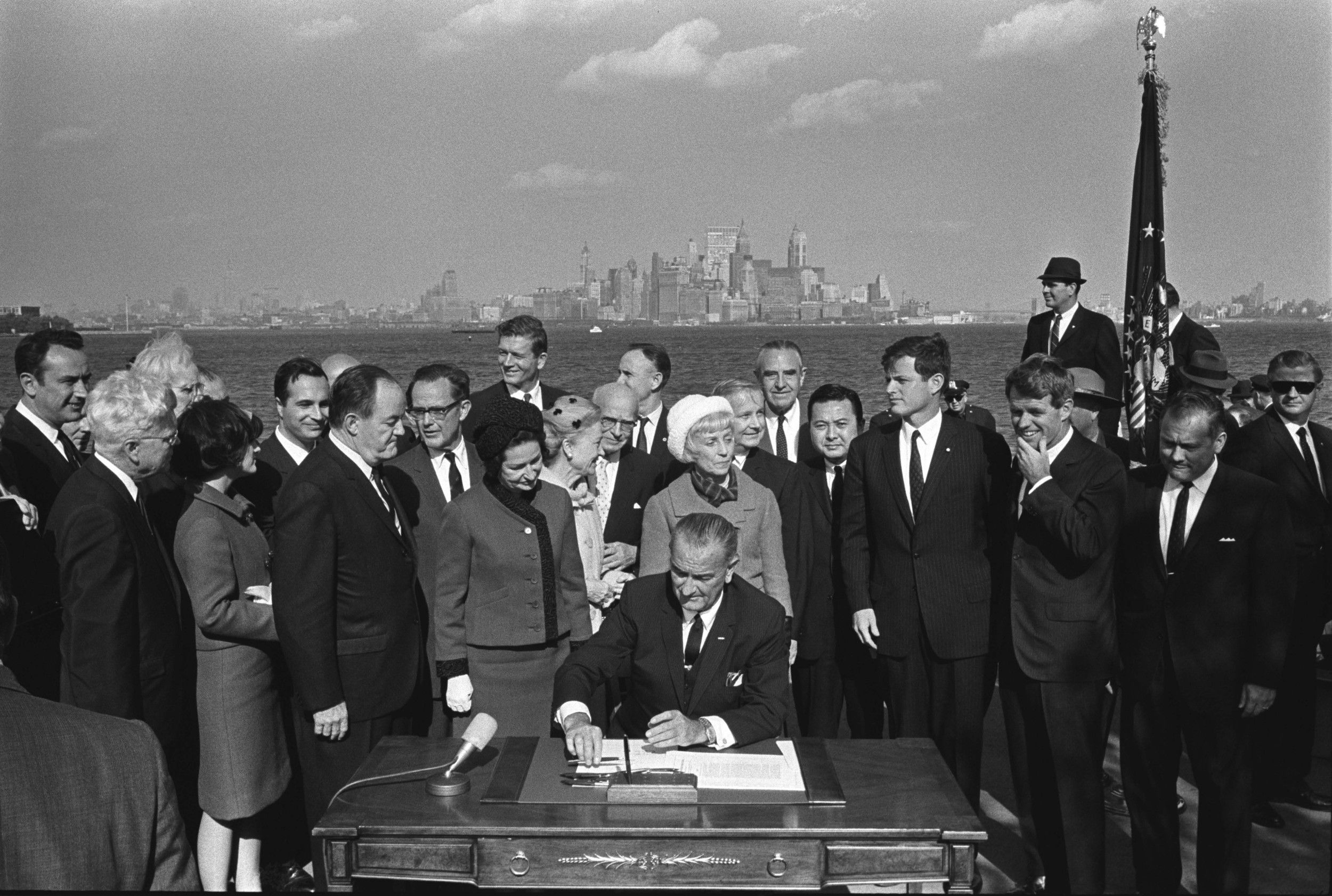
Conclusion
Immigration to America: Stories and Travels
Seeing the Big Picture
Make a list of what countries these people came from, when they came to the United States, and whether their reason for coming was a push or pull factor.- Richard Arvay
- Mary Yee
- Minezo Araki
- Stephan Bondareff
- Carmen Wienke
- Maria Garcia
Now follow each person on their journey around the world using Google Maps. Click on the icons on the map in order to see how each person moved around the globe – each person is represented by a different color. (Or use the navigation bar to the left of the map to click through each person's journey.)
Your Response
Document
Identification form with photograph of Richard Arvay from the Fort Ontario Emergency Refugee Shelter
7/1944
After the Nazis came to power in Germany in 1933, German and Austrian Jews tried in growing numbers to flee persecution. While about 250,000 would eventually come to the U.S. between 1933 and 1945, immigration officials applied regulations so rigidly, especially after the outbreak of World War II in 1939, that quotas for Germany and Austria were rarely filled.
Richard Arvay was one of the few European Jews who escaped the Holocaust and came to the United States during the war. An Austrian writer and filmmaker in the late 1920s and early 1930s, Arvay suffered persecution by the Nazis. He fled to Paris when Germany annexed Austria in 1938. After Germany occupied France in 1940, Arvay was sent to a concentration camp for a year. He escaped to Italy in 1943, when he was threatened with deportation to Poland.
In 1944, he was one of about 1,000 refugees picked to come to America to live in the newly established Fort Ontario Emergency Refugee Shelter in Oswego, New York. President Roosevelt had established the camp to respond to political pressures to do more to help Jews in Europe and to sidestep immigration regulations. Initially, refugees had to promise to return to Europe when the war was over, but President Truman permitted them to stay.
Richard Arvay lived at Fort Ontario for about 18 months. On a form stating that he did not want to return to Europe, he added a handwritten explanation: “I would also find it impossible to live in a country where all my family have been killed.” He brought his wife to America, settled in New York City, and worked as a writer. In 1951 he became a U.S. citizen. He died in 1970.
Richard Arvay was one of the few European Jews who escaped the Holocaust and came to the United States during the war. An Austrian writer and filmmaker in the late 1920s and early 1930s, Arvay suffered persecution by the Nazis. He fled to Paris when Germany annexed Austria in 1938. After Germany occupied France in 1940, Arvay was sent to a concentration camp for a year. He escaped to Italy in 1943, when he was threatened with deportation to Poland.
In 1944, he was one of about 1,000 refugees picked to come to America to live in the newly established Fort Ontario Emergency Refugee Shelter in Oswego, New York. President Roosevelt had established the camp to respond to political pressures to do more to help Jews in Europe and to sidestep immigration regulations. Initially, refugees had to promise to return to Europe when the war was over, but President Truman permitted them to stay.
Richard Arvay lived at Fort Ontario for about 18 months. On a form stating that he did not want to return to Europe, he added a handwritten explanation: “I would also find it impossible to live in a country where all my family have been killed.” He brought his wife to America, settled in New York City, and worked as a writer. In 1951 he became a U.S. citizen. He died in 1970.
This primary source comes from the Records of the War Relocation Authority.
National Archives Identifier: 1548872
Full Citation: Identification form with photograph of Richard Arvay from the Fort Ontario Emergency Refugee Shelter; 7/1944; Refugee Case Files, 1944 - 1946; Records of the War Relocation Authority, ; National Archives Building, Washington, DC. [Online Version, https://docsteach.org/documents/document/arvay-id-form, April 25, 2024]Identification form with photograph of Richard Arvay from the Fort Ontario Emergency Refugee Shelter
Page 1
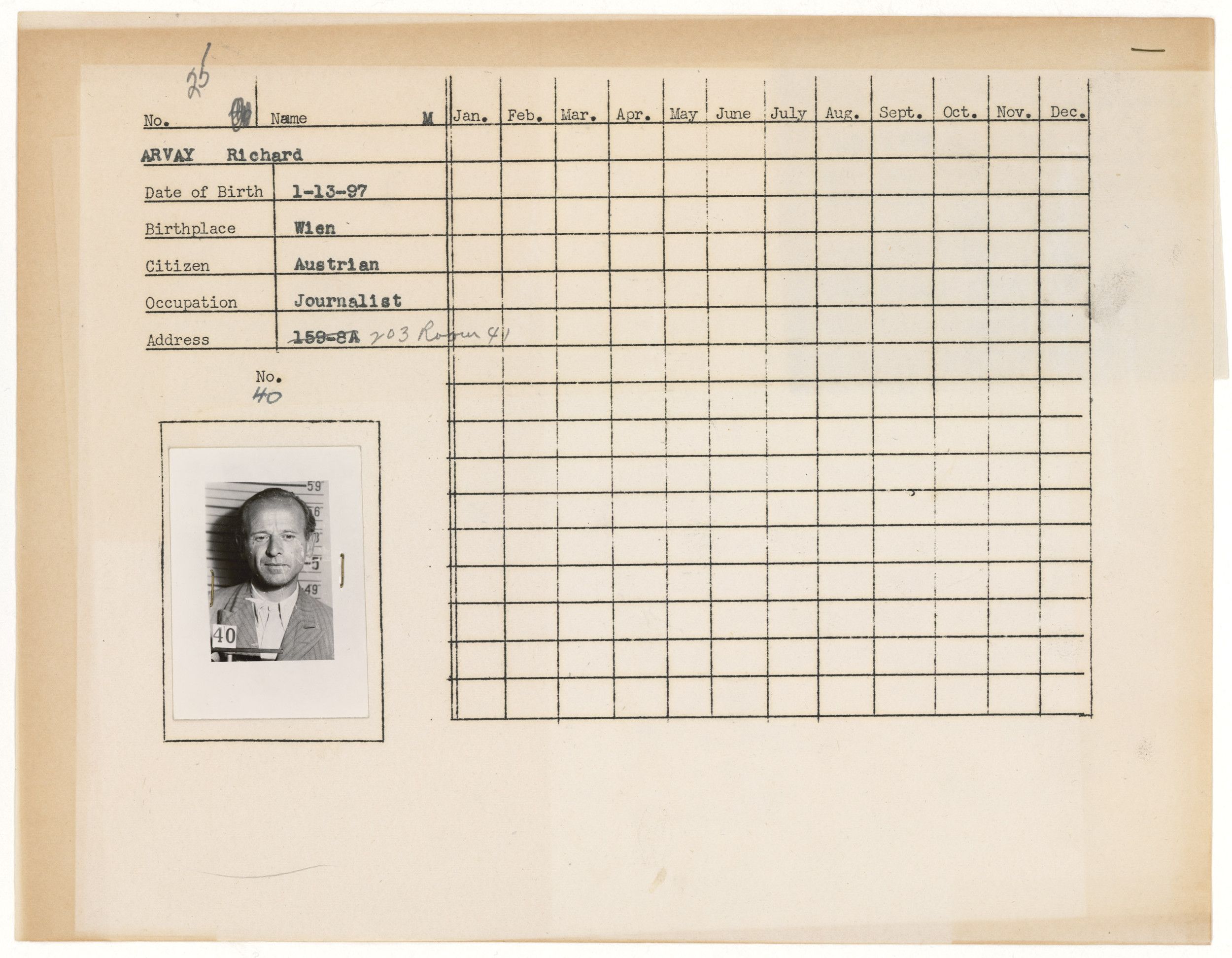
Identification form with photograph of Richard Arvay from the Fort Ontario Emergency Refugee Shelter
Page 2
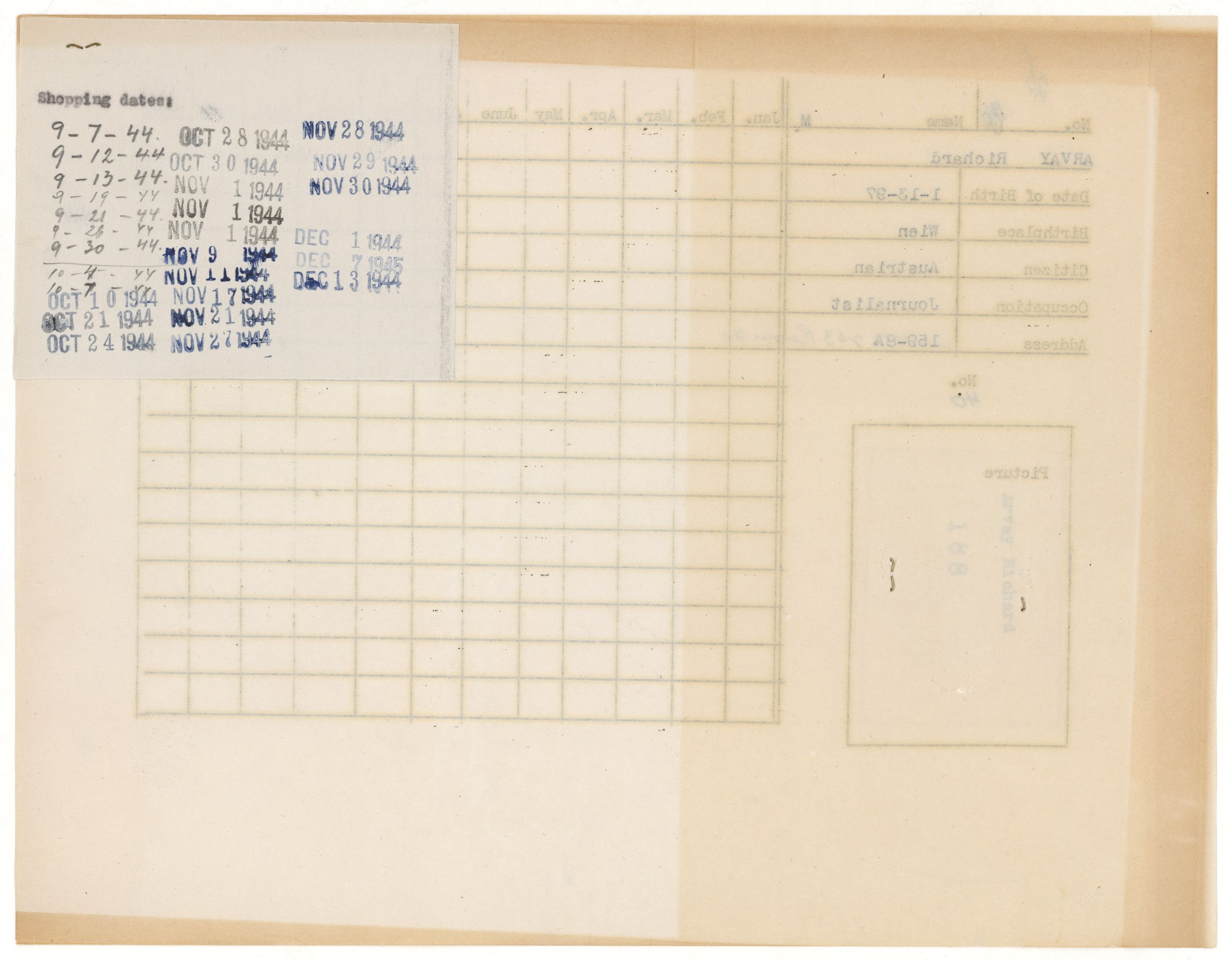
Document
Application of Lawfully Domiciled Chinese Laborer for Return Certificate for Mrs. Yee Shing aka Mary Yee
9/8/1922
In 1922, Yee Shing, a Chinese merchant living in Sioux Falls, South Dakota, and his wife, Mary, wanted to take their family to China to educate their American-born children. Several months before their departure, Yee filed the paperwork for a “return certificate,” establishing his right to come back to America, and ensuring that his children could also return. This was necessary because of the Chinese Exclusion Act of 1882 and its extensions.
Mary, Yee’s American-born wife, was no longer a U.S. citizen because of their marriage. Under the Expatriation Act of 1907, a female U.S. citizen who married a citizen of another nation automatically lost her U.S. citizenship and took on the nationality of her husband. In other words, when Mary married Yee Shing, she became Chinese.
As “a lawfully domiciled Chinese Laborer,” Mary also had to file this paperwork before leaving the country to ensure that she would be allowed to return. She attached her photograph and submitted to an interview. Her return certificate was approved, and the family left Seattle for China on September 16, 1922.
Mary, Yee’s American-born wife, was no longer a U.S. citizen because of their marriage. Under the Expatriation Act of 1907, a female U.S. citizen who married a citizen of another nation automatically lost her U.S. citizenship and took on the nationality of her husband. In other words, when Mary married Yee Shing, she became Chinese.
As “a lawfully domiciled Chinese Laborer,” Mary also had to file this paperwork before leaving the country to ensure that she would be allowed to return. She attached her photograph and submitted to an interview. Her return certificate was approved, and the family left Seattle for China on September 16, 1922.
This primary source comes from the Records of the Immigration and Naturalization Service.
National Archives Identifier: 6341134
Full Citation: Application of Lawfully Domiciled Chinese Laborer for Return Certificate for Mrs. Yee Shing aka Mary Yee; 9/8/1922; Case File of Yee Shee (re: Mary Yee); Chinese Exclusion Act Case Files, ca. 1895 - ca. 1943; Records of the Immigration and Naturalization Service, ; National Archives at Seattle, Seattle, WA. [Online Version, https://docsteach.org/documents/document/application-return-mary-yee, April 25, 2024]Application of Lawfully Domiciled Chinese Laborer for Return Certificate for Mrs. Yee Shing aka Mary Yee
Page 1
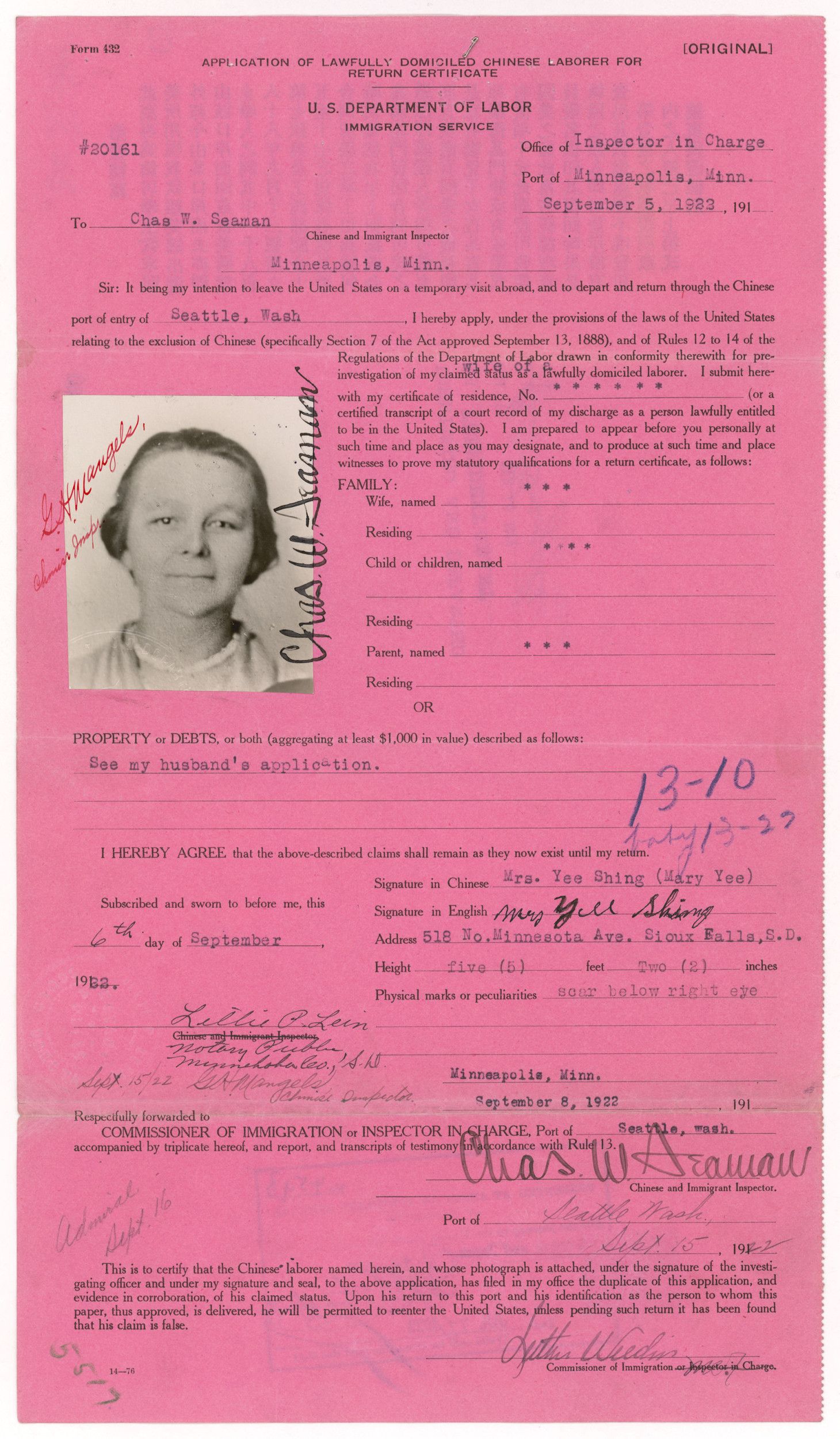
Application of Lawfully Domiciled Chinese Laborer for Return Certificate for Mrs. Yee Shing aka Mary Yee
Page 2
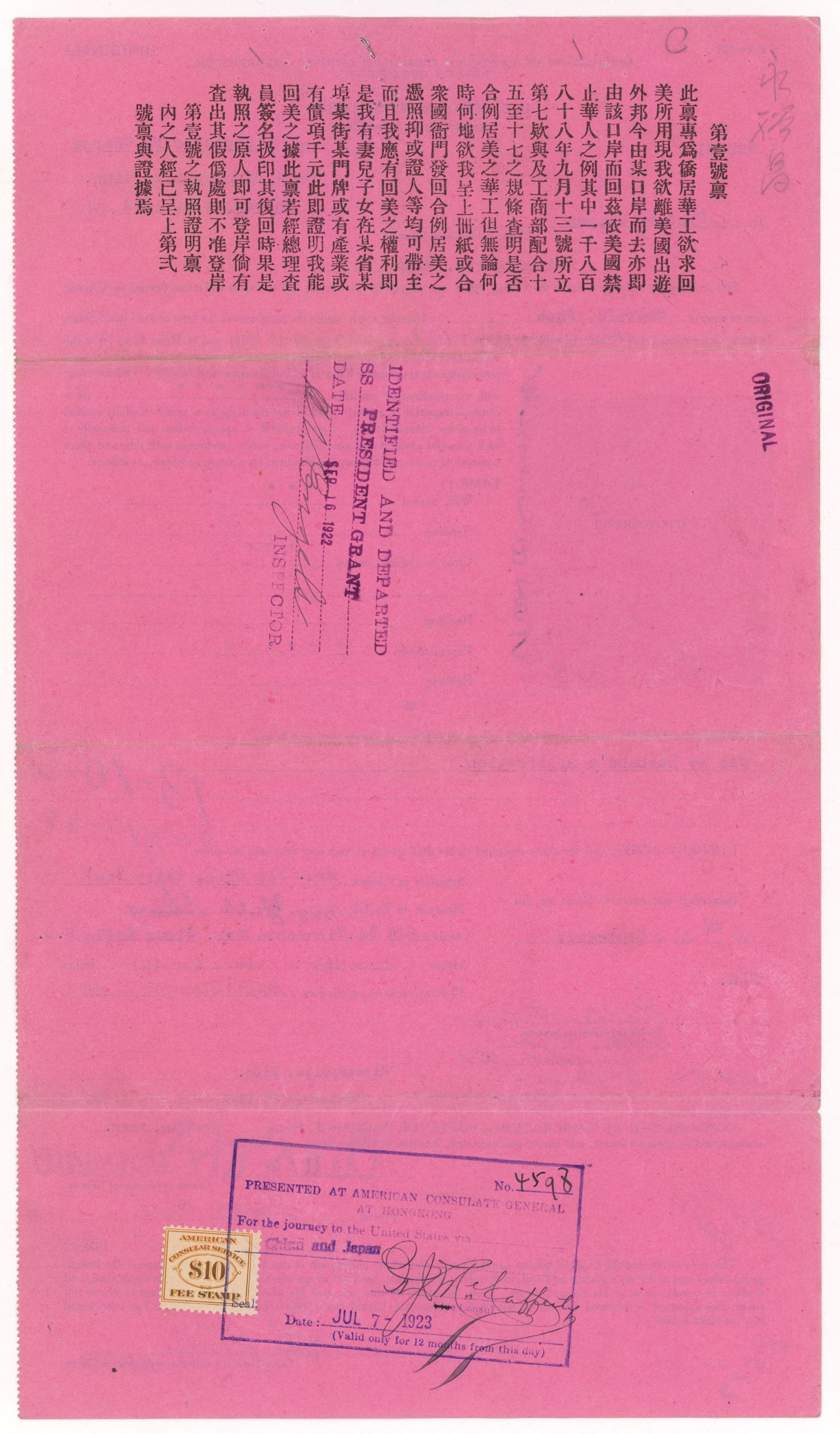
Document
Intelligence Report on Vessel 27-A-726, America
11/27/1941
After the Japanese attack on Pearl Harbor, Hawaii, on December 7, 1941, Minezo Araki, a Japanese fisherman who had been living in the United States for more than 30 years, went from being an alien to being an enemy alien.
Minezo had come to the United States in 1908, landing in Seattle and working as a farmer and a fisherman off the coast of Southern California. He married Wai Araki and together they raised her two children from a previous marriage and a daughter from his former marriage.
Even before December 7, as relations between the United States and Japan deteriorated, Japanese aliens were subject to increasing scrutiny by law enforcement and military officials. With such suspicions, the U.S. Navy and Coast Guard boarded Araki’s fishing boat, America, on November 27, 1941, and searched it for hidden radios and charts.
After war broke out, he was evacuated under the Enemy Alien Act to the San Pedro, California, assembly center. On February 4, 1942, he was sent to a camp for Japanese enemy aliens and German prisoners of war, near Bismarck, North Dakota. In July 1942, he joined the rest of his family in the Poston, Arizona, internment camp.
When the war turned in favor of the United States, Minezo and his family were allowed to leave Poston in the spring of 1943. They returned to California. Araki remained in the United States until his death in 1965.
Minezo had come to the United States in 1908, landing in Seattle and working as a farmer and a fisherman off the coast of Southern California. He married Wai Araki and together they raised her two children from a previous marriage and a daughter from his former marriage.
Even before December 7, as relations between the United States and Japan deteriorated, Japanese aliens were subject to increasing scrutiny by law enforcement and military officials. With such suspicions, the U.S. Navy and Coast Guard boarded Araki’s fishing boat, America, on November 27, 1941, and searched it for hidden radios and charts.
After war broke out, he was evacuated under the Enemy Alien Act to the San Pedro, California, assembly center. On February 4, 1942, he was sent to a camp for Japanese enemy aliens and German prisoners of war, near Bismarck, North Dakota. In July 1942, he joined the rest of his family in the Poston, Arizona, internment camp.
When the war turned in favor of the United States, Minezo and his family were allowed to leave Poston in the spring of 1943. They returned to California. Araki remained in the United States until his death in 1965.
This primary source comes from the Records of Naval Districts and Shore Establishments.
National Archives Identifier: 41050002
Full Citation: Intelligence Report on Vessel 27-A-726, America; 11/27/1941; A8-5 Espionage; Central Subject Files, 1940 - 1971; Records of Naval Districts and Shore Establishments, ; National Archives at Riverside, Perris, CA. [Online Version, https://docsteach.org/documents/document/boat-america, April 25, 2024]Intelligence Report on Vessel 27-A-726, America
Page 1
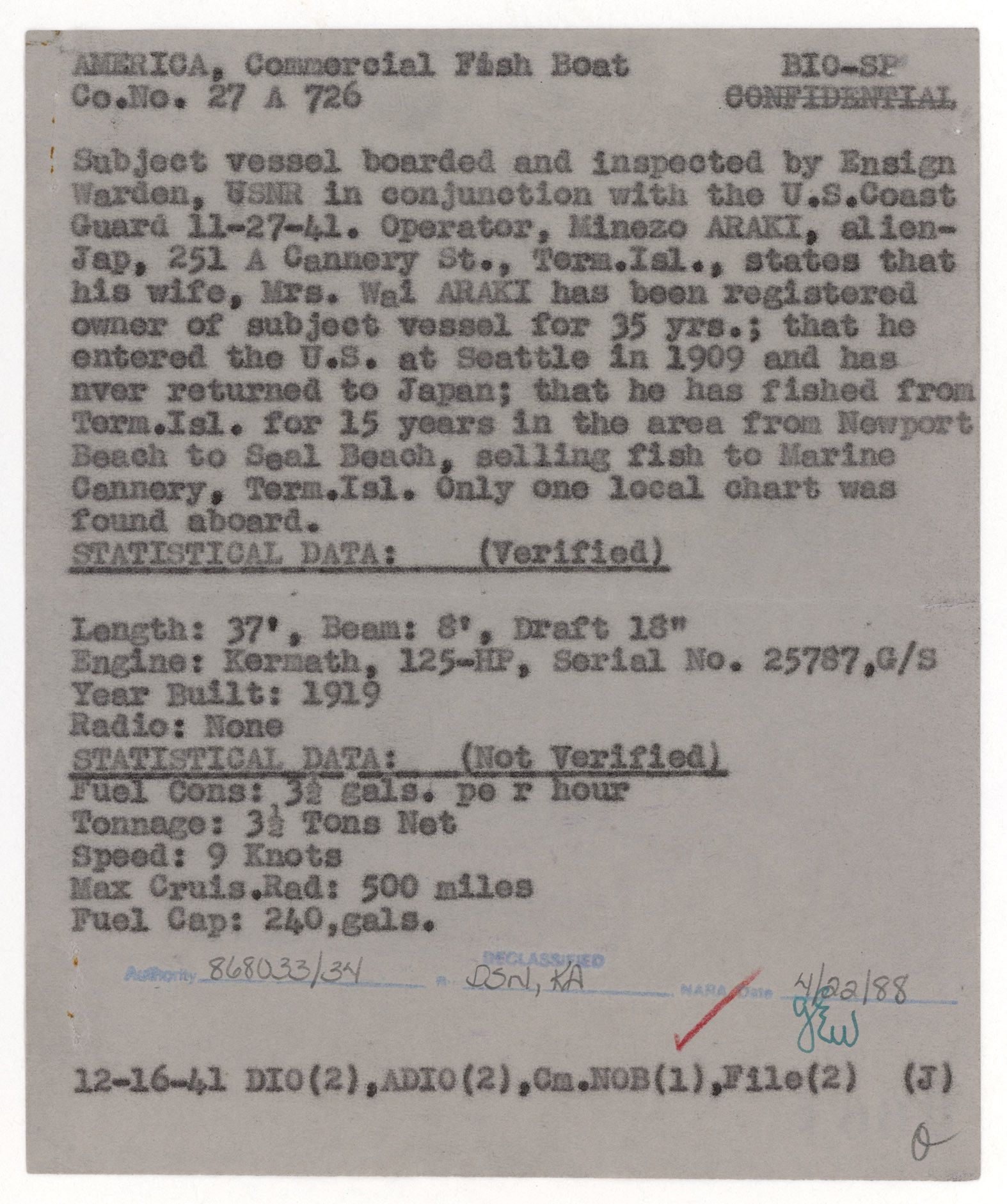
Intelligence Report on Vessel 27-A-726, America
Page 2
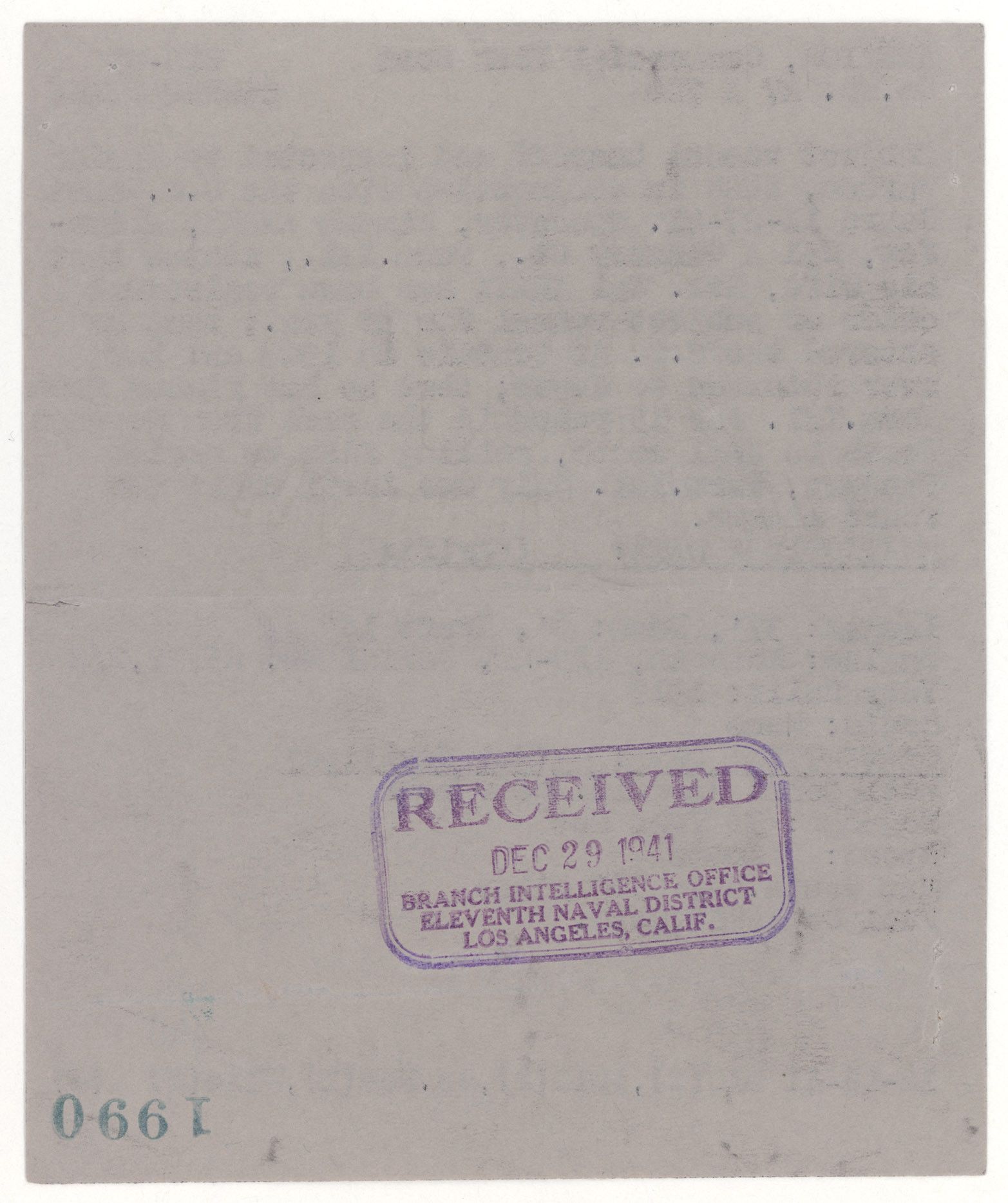
Intelligence Report on Vessel 27-A-726, America
Page 3
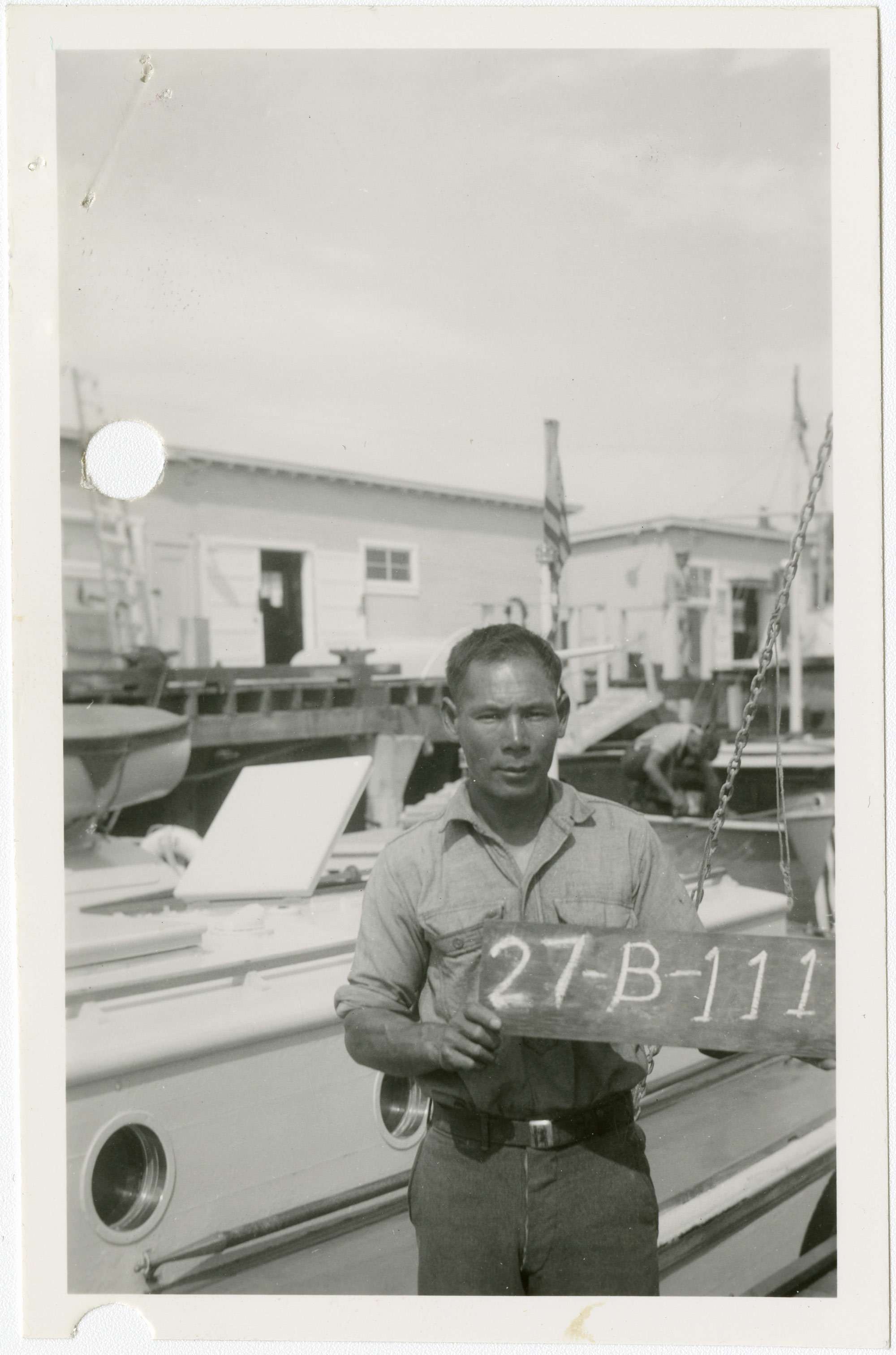
Intelligence Report on Vessel 27-A-726, America
Page 4
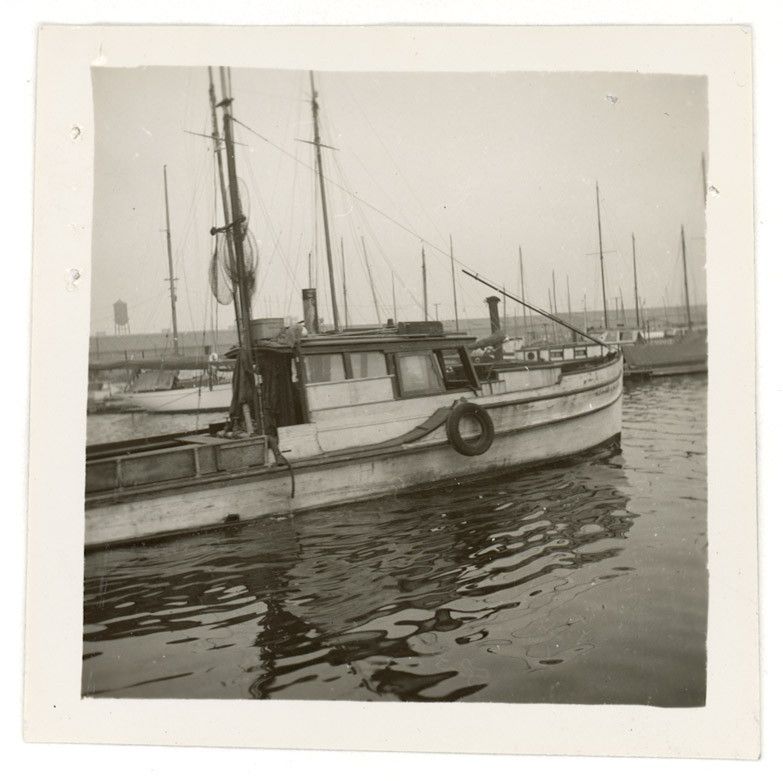
Intelligence Report on Vessel 27-A-726, America
Page 5
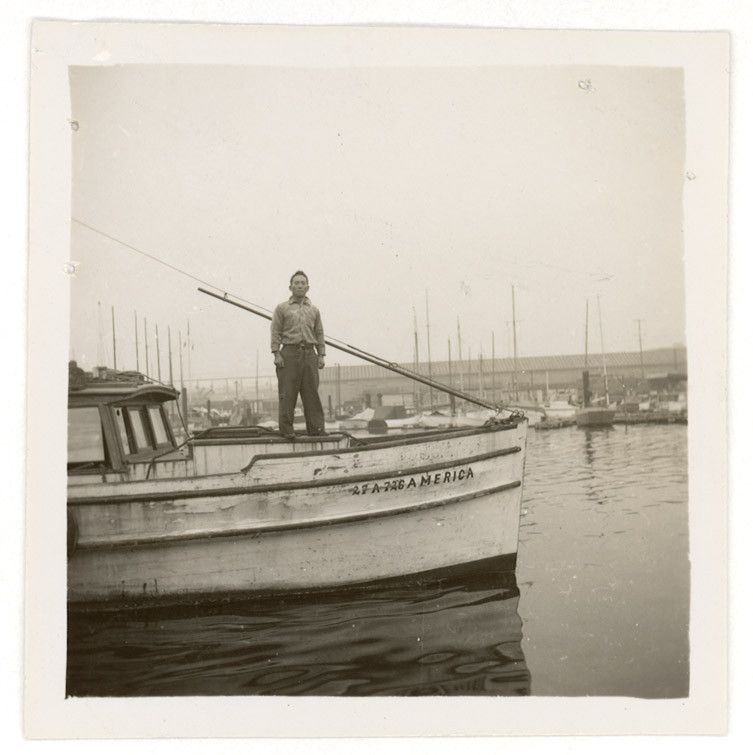
Intelligence Report on Vessel 27-A-726, America
Page 6
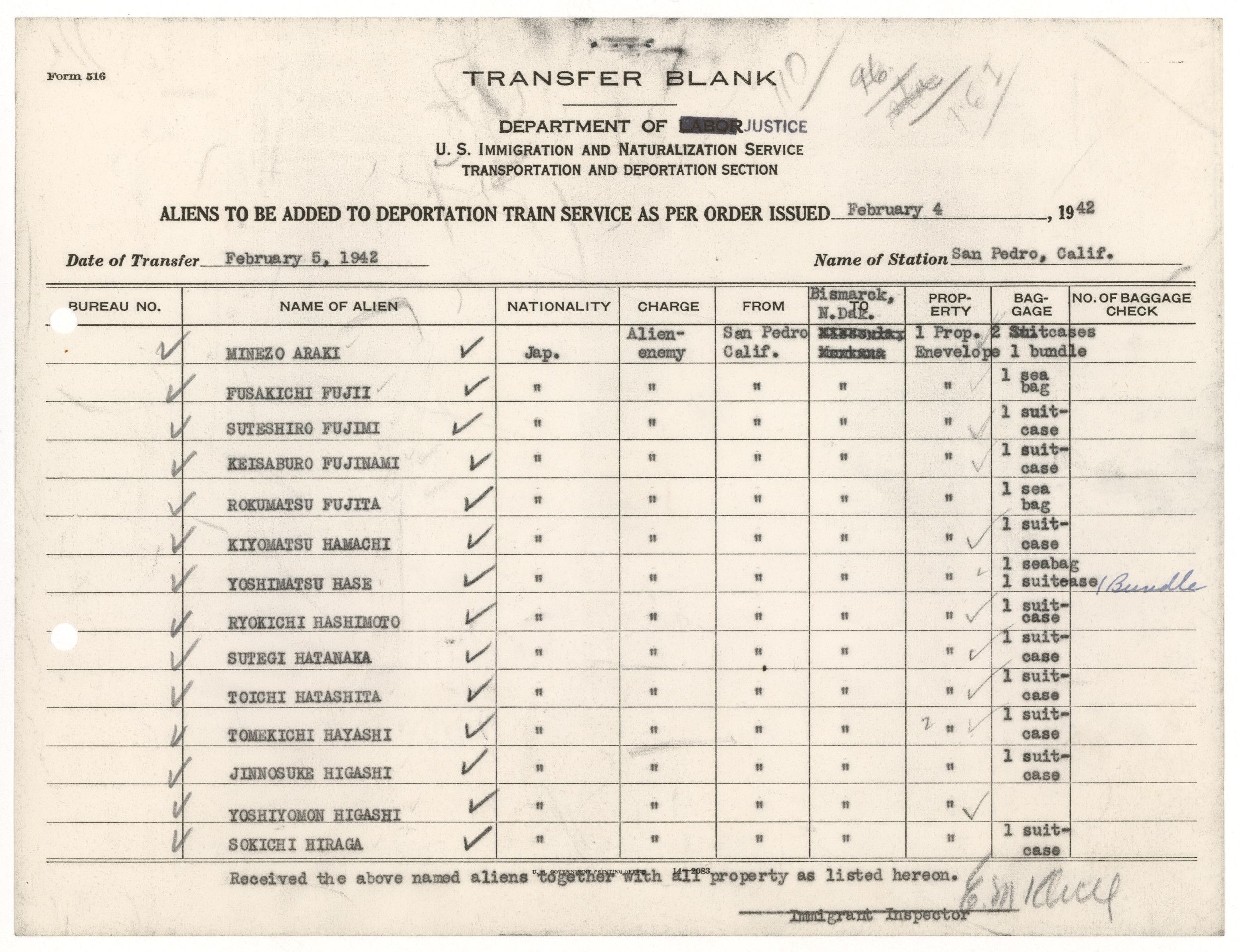
Document
Certificate of Arrival for Stephan Sevestian Bondareff
1/26/1935
A refugee from the 1917–1921 Russian Civil War, Stephan Bondareff served in the White Russian Army that was defeated by the Red Army (Bolsheviks), who created the Soviet Union. After fleeing Russia in 1920, he traveled to Turkey, Bulgaria, and Paris, France.
In Paris, Bondareff was hired by the Miller Brothers 101 Ranch Wild West Show as a “cossack horse trick rider.” After briefly working in the United States, he traveled with the show to Laredo, Mexico, in December 1926.
On September 12, 1927, fearing he would not be allowed to enter the United States since he had no visa, Bondareff “Waded Rio Grande River” at Eagle Pass, Texas. He later settled in Dearborn, Michigan, and worked for the Ford Motor Company.
Seven years later, Bondareff took advantage of a law designed to allow Russians who had fled the Soviet Union without proper documentation to create a record of their arrival and apply for permanent residence. He filed to legalize his status in August 1934, writing that he was without a passport, and that if he returned to the Soviet Union “they would put me in the jail first and then kill me.” Immigration officials created a record describing Bondareff’s river crossing, and he was granted permanent resident status. He became a U.S. citizen in 1937, and died in 1978.
In Paris, Bondareff was hired by the Miller Brothers 101 Ranch Wild West Show as a “cossack horse trick rider.” After briefly working in the United States, he traveled with the show to Laredo, Mexico, in December 1926.
On September 12, 1927, fearing he would not be allowed to enter the United States since he had no visa, Bondareff “Waded Rio Grande River” at Eagle Pass, Texas. He later settled in Dearborn, Michigan, and worked for the Ford Motor Company.
Seven years later, Bondareff took advantage of a law designed to allow Russians who had fled the Soviet Union without proper documentation to create a record of their arrival and apply for permanent residence. He filed to legalize his status in August 1934, writing that he was without a passport, and that if he returned to the Soviet Union “they would put me in the jail first and then kill me.” Immigration officials created a record describing Bondareff’s river crossing, and he was granted permanent resident status. He became a U.S. citizen in 1937, and died in 1978.
This primary source comes from the Records of District Courts of the United States.
National Archives Identifier: 6341140
Full Citation: Certificate of Arrival for Stephan Sevestian Bondareff; 1/26/1935; Naturalization Petitions and Records, 1906 - 1991; Records of District Courts of the United States, ; National Archives at Chicago, Chicago, IL. [Online Version, https://docsteach.org/documents/document/certificate-arrival-bondareff, April 25, 2024]Certificate of Arrival for Stephan Sevestian Bondareff
Page 1

Document
Authorization for Return of Filipino to Manila, Philippine Islands
6/12/1936
Philippine-born Carmen Wienke married a former U.S. serviceman in 1919. By the early years of the Great Depression, she and her family of six children were living in San Francisco, California, where they, like so many others, were facing tough economic times.
After 1934, Carmen also faced changes to her immigration status. The Tydings-McDuffie Act granted Philippine independence, but changed her status from “U.S. national” to “alien.”
Congress had created a repatriation program under which Filipinos living in northern California were given a one-way ticket should they voluntarily return to the Philippines. According to Wienke, a social worker came to her home and threatened to cut off her family from unemployment relief unless she returned to the Philippines. She and her family sailed for Manila in 1936.
By 1939, Wienke had second thoughts. She was convinced that her marriage gave her and her children U.S. citizenship, but when she attempted to reenter the United States and rejoin her husband, she and her children were detained on Angel Island. Officials ruled against her on two legal technicalities, and after a number of appeals, she and her children were deported back to Manila in March 1940. They had been detained on Angel Island for eight months.
In December 1941, the Japanese invaded and eventually occupied the Philippine Islands. Carmen and her family spent the war years held by the Japanese in an internment camp. When they were released in 1945, Carmen and her family sailed to the United States, described as a citizen who had been born in San Francisco. She became a naturalized U.S. citizen in 1960.
After 1934, Carmen also faced changes to her immigration status. The Tydings-McDuffie Act granted Philippine independence, but changed her status from “U.S. national” to “alien.”
Congress had created a repatriation program under which Filipinos living in northern California were given a one-way ticket should they voluntarily return to the Philippines. According to Wienke, a social worker came to her home and threatened to cut off her family from unemployment relief unless she returned to the Philippines. She and her family sailed for Manila in 1936.
By 1939, Wienke had second thoughts. She was convinced that her marriage gave her and her children U.S. citizenship, but when she attempted to reenter the United States and rejoin her husband, she and her children were detained on Angel Island. Officials ruled against her on two legal technicalities, and after a number of appeals, she and her children were deported back to Manila in March 1940. They had been detained on Angel Island for eight months.
In December 1941, the Japanese invaded and eventually occupied the Philippine Islands. Carmen and her family spent the war years held by the Japanese in an internment camp. When they were released in 1945, Carmen and her family sailed to the United States, described as a citizen who had been born in San Francisco. She became a naturalized U.S. citizen in 1960.
This primary source comes from the Records of the Immigration and Naturalization Service.
National Archives Identifier: 6587583
Full Citation: Authorization for Return of Filipino to Manila, Philippine Islands; 6/12/1936 ; Immigration Arrival Investigation Case File for Carmen Wienke and Children (39384/1-2 through 1-7); Immigration Arrival Investigation Case Files, 1884 - 1944; Records of the Immigration and Naturalization Service, ; National Archives at San Francisco, San Bruno, CA. [Online Version, https://docsteach.org/documents/document/return-wienke-philippines, April 25, 2024]Authorization for Return of Filipino to Manila, Philippine Islands
Page 1
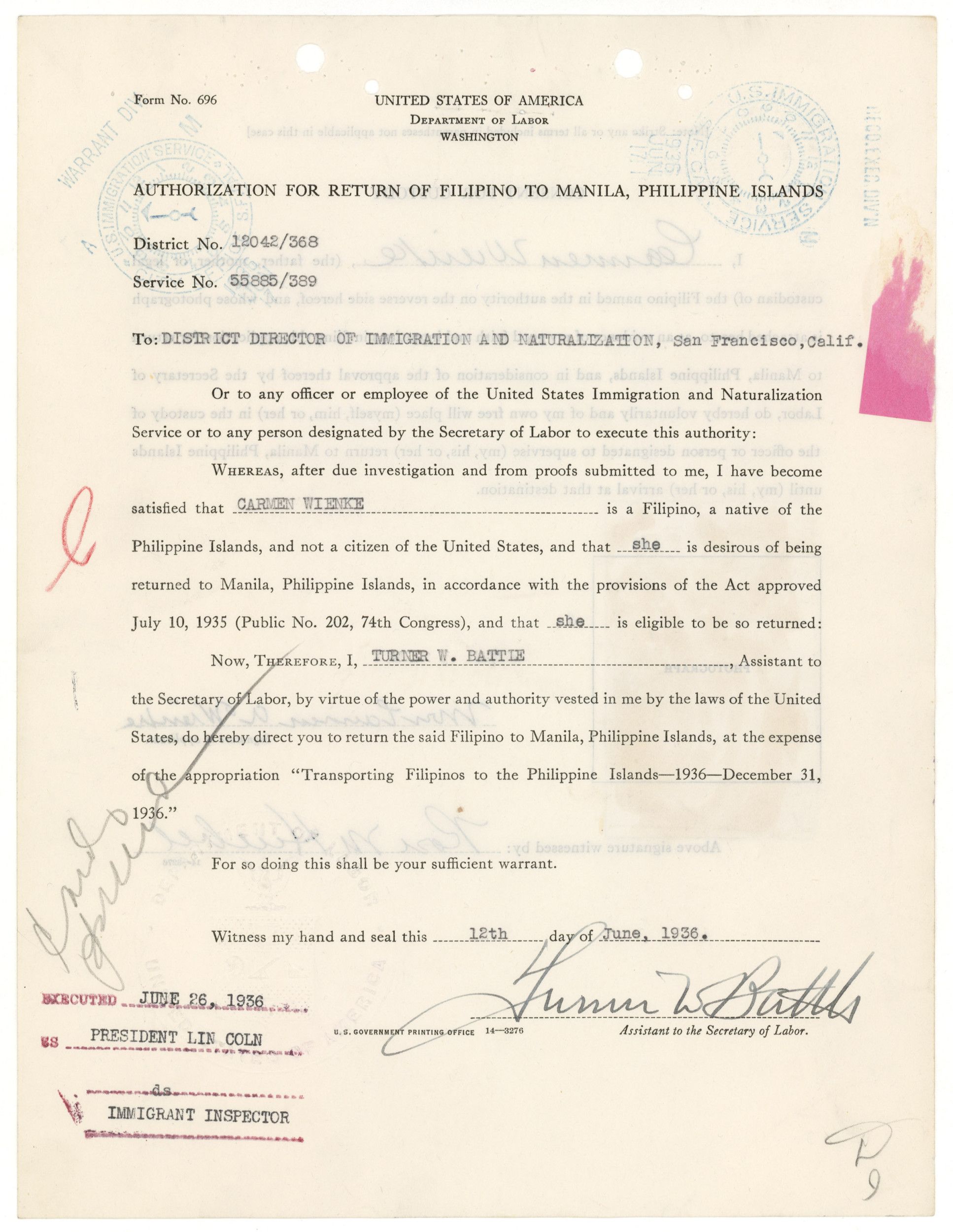
Authorization for Return of Filipino to Manila, Philippine Islands
Page 2
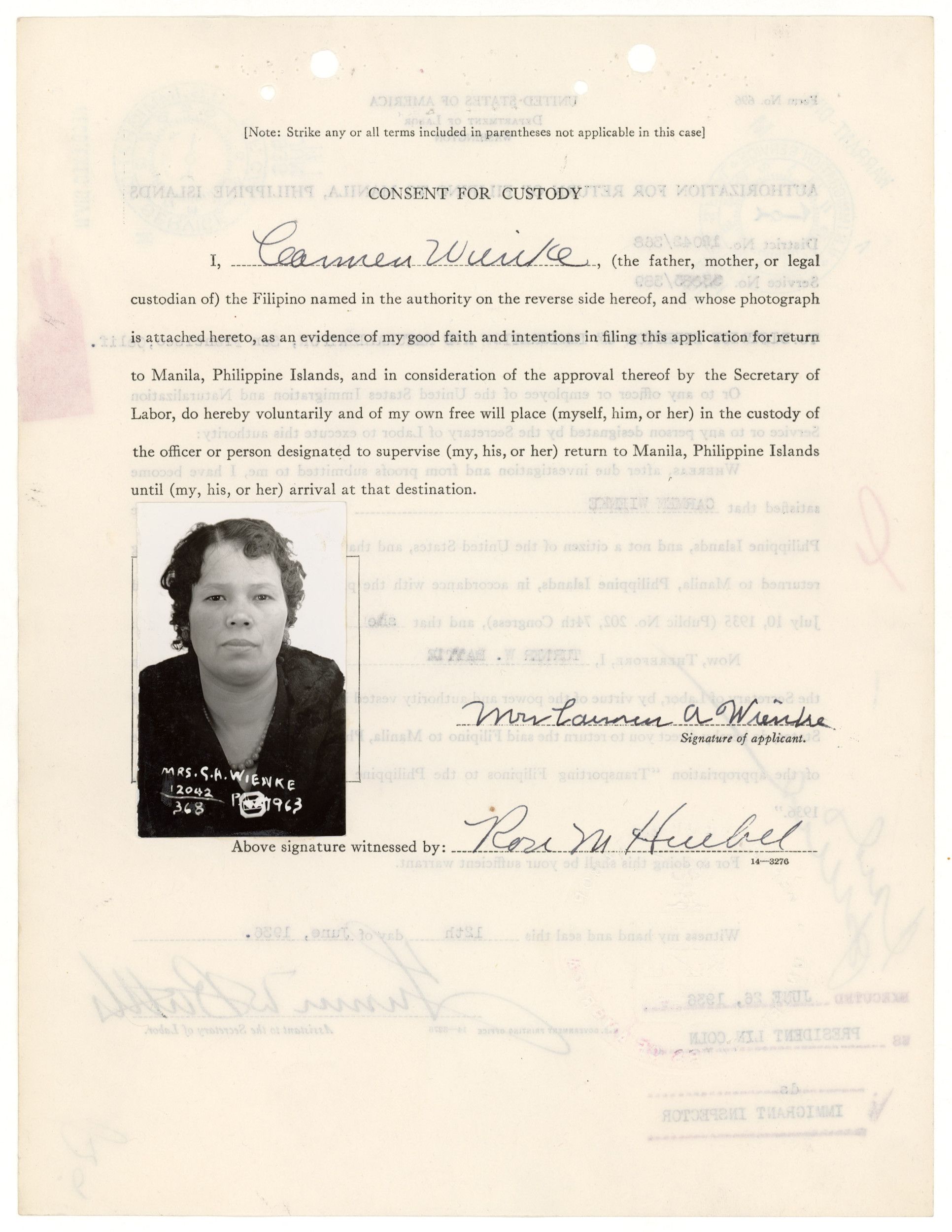
Document
Petition for Naturalization for Maria Garcia
6/10/1940
Immigrants from Mexico, and the rest of the Western Hemisphere, were not subject to the annual numerical quotas imposed by the Immigration Act of 1924 (also known as the Johnson–Reed Act or the National Origins Act of 1924). But the act also made visas—a package of documentation including a photograph—required of all travelers. The result was that crossing the Mexico–U.S. border became more difficult and expensive.
Maria Zamora de Garcia was born in La Colorada, Mexico, in 1900. She first entered the United States in 1918 without registering and without paying the required $8 head tax, presumably because she came with her husband who was a Mexican government official and she and her family would have been classified as non-immigrants.
After the 1924 law made crossing the border more complicated, she wanted to document her status and that of her Mexican-born child. So on July 22, 1924, she went to Nogales, Arizona, crossed into Mexico, and visited the U.S. Consulate there to obtain a visa and pay the head tax. Maria walked back through the gate into the United States (arriving “On Foot”) and was admitted as a lawful, permanent resident alien.
In 1940, Maria Garcia became a U.S. citizen. She did not have to file a declaration of intention or wait the usual five years as her second husband, Nicolas Blas Garcia, was a United States citizen who was born in Texas.
Maria Zamora de Garcia was born in La Colorada, Mexico, in 1900. She first entered the United States in 1918 without registering and without paying the required $8 head tax, presumably because she came with her husband who was a Mexican government official and she and her family would have been classified as non-immigrants.
After the 1924 law made crossing the border more complicated, she wanted to document her status and that of her Mexican-born child. So on July 22, 1924, she went to Nogales, Arizona, crossed into Mexico, and visited the U.S. Consulate there to obtain a visa and pay the head tax. Maria walked back through the gate into the United States (arriving “On Foot”) and was admitted as a lawful, permanent resident alien.
In 1940, Maria Garcia became a U.S. citizen. She did not have to file a declaration of intention or wait the usual five years as her second husband, Nicolas Blas Garcia, was a United States citizen who was born in Texas.
This primary source comes from the Records of the District Courts of the United States.
National Archives Identifier: 6341120
Full Citation: Petition for Naturalization for Maria Garcia; 6/10/1940; Petition Number 75878; Petitions for Naturalization, 1887 - 1991; Records of the District Courts of the United States, ; National Archives at Riverside, Perris, CA. [Online Version, https://docsteach.org/documents/document/petition-naturalization-maria-garcia, April 25, 2024]Petition for Naturalization for Maria Garcia
Page 1

Petition for Naturalization for Maria Garcia
Page 2
